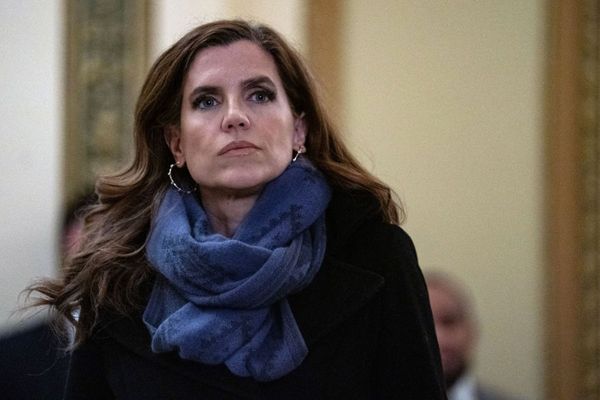
Yesterday Sarah Hunter, the Reserve Bank’s assistant governor (economic), gave a speech about where the central bank thinks we’re at with regard to employment. Among her observations was “our assessment is that the labour market is still tight relative to full employment” but “we expect the demand for labour to grow at a slower pace relative to the supply of labour in the coming quarters, gradually bringing the labour market into better balance”.
Hunter also noted that one of the reasons for the persistent resilience of the labour market is “aggregate employment supported by strong growth in the health, education and public administration sectors”.
How did this get written up at the Financial Review? “Jobs boom fuelling inflation, RBA warns,” ran the headline. And the copy, from economics reporter Michael Read, was no better. “Australia’s jobs market is still too strong and fuelling inflation, the Reserve Bank’s chief economist, Sarah Hunter, says,” Read wrote.
Hunter never said any such thing. She barely mentioned inflation, and she certainly didn’t claim the jobs market was “too strong” or “fueling inflation”.
That verballing was only the latest instalment in the Financial Review’s long-running campaign for higher interest rates, which includes a relentless attack on Labor for spending too much — despite the government delivering two surpluses in a row.
There’s been plenty of criticism dished out to the RBA over it being too aggressive with rate hikes. But the central bank doesn’t want a recession — it just wants to get inflation down. Indeed, respected economists like Saul Eslake argue that it hasn’t gone as hard as other central banks out of a concern to deliver a sustained fall in inflation without a recession.
It’s very different at the Financial Review, and within the coterie of inflation hawk economists who churn out endless op-eds on the need for higher interest rates and lower government spending. The Financial Review and those economists — all cosily employed in high-paying jobs, without any risk of losing them or ever facing the kind of economic precarity that is the lot of so many workers — want a recession.
How do we know? Because if the current economy is too strong for them, when the June quarter of growth was just 0.2%, there’s nowhere else to go but into recession.
Why do they want one? Not merely because they’re doctrinaire neoliberals, but because a recession will drive up unemployment, enabling business to cut workers’ wages and conditions — all of which is good for the bank accounts of the AFR’s investor and business executive readers.
That a recession would inflict misery on an industrial scale doesn’t worry this mob. In March 2020 the AFR’s economics editor John Kehoe famously called for COVID-19 to be allowed to let rip because it only killed older people. Kehoe even suggested his own father would be happy to be knocked off by the virus if it meant fewer economic costs.
But the same workers that Kehoe pleaded for older Australians to be sacrificed to the virus for are now the workers the AFR wants to see out of work in the name of ever-higher interest rates.
The latest front in this particular campaign is the confected “clash” between Treasurer Jim Chalmers and the Reserve Bank, hyped up by the AFR and Labor’s enemies at The Australian and in the Coalition. It was always absurd, based as it was on Chalmers saying, accurately, that the RBA’s interest rate hikes were “smashing” the economy. Strangely, Chalmers has referred to the RBA’s interest rate hikes “hammering” the economy for months, without a peep, but “smashing” caused Margaret Dumont-level pearl-clutching.
Like those holy wars The Australian likes to launch against ideological targets, the absurdity hasn’t stopped acres of facile op-eds, including one comparing Chalmers to Whitlam treasurer Jim Cairns — a politician best known for having a relationship with his private secretary. Charming.
The treasurer is portrayed as a spendthrift who is furiously pissing away taxpayer money, instead of the first treasurer since the financial crisis to run a surplus. As it turns out, given the tepid level of economic growth, Chalmers’ 2024-25 deficit spending is exactly what’s needed to prop up an economy visibly struggling to draw breath.
A key vehicle for doing that was identified by Hunter in her speech — the boom in jobs, either in the public sector or indirectly supported by governments, in health, social care and education (Crikey spotted this impact a while back but it’s taken a while for the RBA and the AFR to catch up).
The AFR doesn’t like health and social care spending — it has long campaigned against the NDIS, claims wage rises for our lowest-paid workers in care industries are inflationary, and argues that health and caring are low productivity areas of the economy — a view the Productivity Commission doesn’t share.
So here’s the challenge for the AFR and its ranks of neoliberal economists. First, be honest and admit that you want a recession. It would bring an element of good faith to the paper’s economic coverage entirely missing at the moment.
Second, spell out where you think spending should be cut. You’re always harping on about the NDIS. But that’s not going to do it alone. Where else? When was the last time the AFR called for defence spending — manifestly riddled with rorts, stupidity and soft corruption, usually with nine digits in the cost — to be reined in? Given the role of government spending in supporting a labour market that’s “too strong” and “fueling inflation”, is it health and social care spending? Do you want lower pay for childcare workers? Fewer doctors, nurses and allied health professionals in our health system? Less funding for home care packages for seniors? Fewer staff in residential aged care?
Wonder how the AFR’s Boomer readership would react to that — to be told they should spend their last lonely days in an understaffed, inadequate nursing home. Might go down about as well as suggesting they drop dead in the name of economic efficiency.







